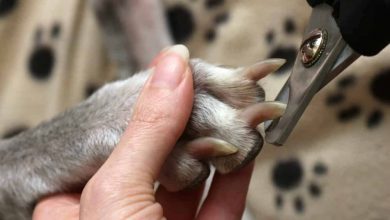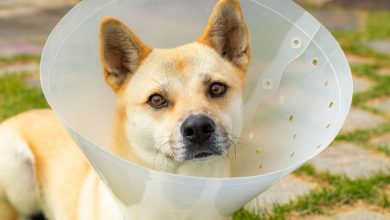When Do Mixed Breed Dogs Stop Growing?

Out of many breeds of dogs that exist in the world, it makes total sense why would you want to adopt a mixed breed pup, and more so if you are a freak obsessed with unique and cutest dogs. While they still are not as common a sight as common ones, mixed breed dogs are becoming a member of more and more houses lately. If you are looking forward to keeping a mixed breed or already have one, we can assure you that being a parent to such a unique pet is surely something to enjoy.
However, as is with other dogs, mixed breed dogs also have a wide range of knowledge revolving around them and as a parent of such dogs, you better equip yourself with all such knowledge to be able to be a great dog owner. Out of many concerns, a dog’s size is quite an important one. While it is very easy to search with your dog’s breed name in the google and extract all the information about their size and growth, things get trickier if your dog is a mixed breed.
If you have been asking around as to when do mixed breed dogs stop growing and what is the maximum size you can expect them to reach, you might be at the perfect place. We can certainly say that by now, you have not been able to get the most absolute and precise answer to your question. The reason is that there is never a specific size and age timeline that every mixed breed dog is expected to follow and even we cannot give you the 100% absolute idea on when do these dogs stop growing. We can, however, clarify some misconceptions of yours and can give you a rough estimate of the most common mixed breeds growth patterns that can help you comes up with some realistic expectations regarding your pet’s growth and health. So, without further ado, let us get into the details right away:
Understanding Dog Breeds And Sizes

Before we delve into mixed breed dogs sizes, it is better to have some idea as to how big different dogs are expected to grow. As you know that a mixed breed dog is a child of two dogs from different lineages and breeds, understanding the growth related basics of both the parents is crucial to having some realistic expectations about your mixed breed pup’s growth.
With respect to size and weight, we can roughly divide the dogs into 4 categories based on their adult breed member’s average size.
- If most adult dogs of a breed cannot go beyond 20 lbs., they are considered small breeds
- If most adult dogs of a breed cannot go beyond 50 to 60 lbs., they are considered medium sized breeds
- If most adult dogs of a breed cannot go beyond 120 lbs., they are considered large dog breeds
- If most adult dogs of a breed go up and beyond 120 lbs., they are considered giant breeds
With respect to each breed, the time taken to grow to their fullest and stop growing also differs. Small breed dogs tend to reach their full size and stop growing during the first 6 months of their life i.e., even before they are no more referred to as a puppy and are considered a dog. On the other hand, larger breeds may take anywhere around 8 months to 2 years to reach their full size and stop growing.
Now, depending on what breeds are mated to bring your mixed breed pup to life, the size as well as the total growth time can greatly vary. It is more of a guesswork here and you can hardly get and accurate answer. Mostly, small breeds are mated with small breeds and larger ones are mated with the other members of a giant breed to bring a healthy and rational mixed breed member to the world. In such cases, the time taken by the mixed breed to reach its full growth and stop growing is roughly similar to the size of the parent breeds and hardly ever more than that.
How To Figure Out A Mixed Breed’s Puppy’s Expected Growth?

When people get their hands on a mixed breed pup, they usually know who the parents of that pup are. It is, rather, recommended that you get your hands on a mixed breed pup after having full knowledge about that pup’s parents so you are better able to keep an eye on your pet’s health and growth and know the factors that can affect to relate to its health the most.
However, if you do not know the breed of your pet’s parents, then you might want to do some detective work and guess, based on your dog’s appearance as to what can be the most likely combination of dogs to bring one such puppy to the world. It is still, however, not possible to get a precise idea of when would the dog stop growing. However, if you know the mother’s breed, you can expect the female mixed breed puppy to stop growing at an age when mother is expected to stop. On the other hand, for a mixed breed male pup, you can expect that it will grow a little bigger than its mother and will stop growing roughly at the same time as that followed by the mother.
When you mix two unmatched breeds to become a mixed breed dog’s parents, the puppy resulting will never grow more than the bigger breed parent and no less than the smaller breed parent. When you are trying to figure out a dog’s full-size growth, fur and its thickness is surely something to consider. Initially the puppies might not have a lot of fur and may seem too small for their breed’s size. However, the fur will increase in thickness and reach its maximum density quickly after the puppy is growing.
Other Things That Can Help

In case you are completely lost as an owner and have no idea about your dog’s parents, estimating the dog’s maximum size and time taken by it to reach full growth can be very tricky. We suggest you consult the party that handed over this mixed breed dog to you and get a better idea on its parents and breed specifications. Another way to get a better idea of how big your dog should grow is to consult a certified veterinary doctor. These people have the needed knowledge to better estimate your dog’s breed’s specifications and their maximum age and hence, can easily define what their maximum size should be and ideally by when it should be achieved.
Having information on when and how much growth your dog is able to cover is vital part of being an alert and caring pet parent. While many people will tell you that it is okay not to have any idea about your mixed pup’s breed and physical specifications, we suggest that you do not remain in the dark because of such advice.
Sometimes, a dog’s size and slow growth can help you figure out their serious health issues. Other times, knowing what size they will reach and when they will stop growing can help you get the most perfect and long-lasting wearables for them and get the perfect housing made for them. Even when these are the least of your concerns, just being aware about what to expect from your dog in terms of its growth and the timeline it follows to reach its full size is a good thing and we as experts surely recommend that you gather all such knowledge no matter what it takes.
Conclusion
Being a mixed breed pet’s parent is surely lots of fun and you should never let anyone telling you otherwise impact upon your decision of getting yourself a new mixed breed dog as a pet. However, the only issue, and the one that is surely a considerably problematic one, with having mixed breed pets is the lack of information that is available regarding them. Unlike pure breeders, internet lacks enough data on the physical, mental, behavioral, reproductive, and emotional health of mixed breeds and there is surely a lot of guess work involved in understanding all these things. Even when you get lucky enough to get hold of some information about mixed breeds, you can never be fully sure if the information is valid and brought to you after proper checks and validations. Hence, it is best to consult a certified veterinarian on the topic of their growth and when do mixed breed dogs stop growing.
If nothing else, just focus on the mixed breed puppy as it grows and try to figure out if it resembles more to the breed of its mother or is more like the father. In most cases, the puppy grows out to match the physical parameters of its mother’s breed but sometimes the case can be otherwise too. So, keeping a close eye is the only thing that helps.



